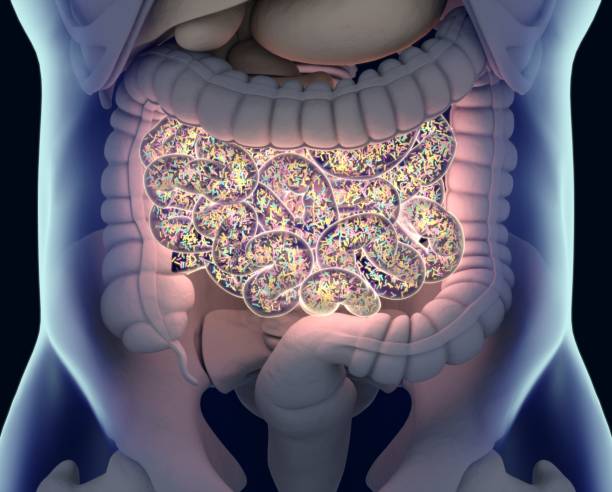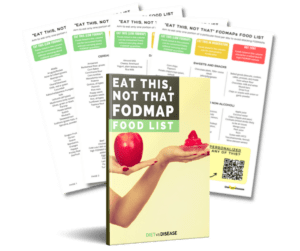Your knee pain, your hip stiffness, that arthritis your doctor calls “wear and tear” — what if it’s actually coming from your gut?
Recent research discussions from the highly reputable Arthritis Foundation suggest that an unhealthy gut may be the primary cause of osteoarthritis, not “wear and tear” like we’ve all been told (1,2,3). And since arthritis is the number one cause of disability in America, this connection could change everything about how we treat joint pain, which we’ll dive more into in this article.
If this gut-arthritis connection is real, it means that inflammatory damage might be starting in your digestive system years before you feel any joint pain. That “wear and tear” your doctor sees on X-rays could actually be inflammatory damage that began in your gut long before symptoms appeared.
Here is a video we made, otherwise there is a written version underneath.
The Science Behind the Gut-Arthritis Connection
The theory behind this research centers on gut dysbiosis creating intestinal permeability — commonly called “leaky gut.”
When your gut barrier becomes compromised, inflammatory molecules escape from your intestines into your bloodstream, travel to your joints, and attack the tissue from the inside out.
This process works through a clear inflammatory cascade: dysbiosis leads to intestinal permeability, which allows molecules to enter circulation and initiate inflammatory responses. When these molecules are floating around with no specific job to do, they create what researchers describe as “mischief” — essentially seeking out vulnerable areas in your body to cause inflammation.
Why Some People Develop Arthritis While Others Don’t

Your most susceptible body system becomes the target for this low-grade inflammation. For some people, it’s the endocrine system, leading to diabetes.
For others, it’s the joints, resulting in rheumatological conditions. It comes down to your individual vulnerability — your “poker hand in life” and whether you have the resilience to deal with inflammatory challenges.
This explains why some people develop severe arthritis while others with similar activity levels don’t.
It might not be just about how much you used your joints — it could be about the state of your gut microbiome and your body’s inflammatory response patterns.
Summary: Gut dysbiosis creates intestinal permeability, allowing inflammatory molecules to escape into the bloodstream and target vulnerable areas like joints, potentially causing what doctors diagnose as “wear and tear” arthritis.
The Bone Health Connection
How Inflammation Gets Trapped in Bone Matrix
The gut-arthritis connection extends beyond joint inflammation to overall bone health. During menopause, women experience approximately 5% bone loss per year, making this a critical time for bone preservation.
When bones undergo their natural mineralization process, growth hormones and inflammatory markers (interleukins) get incorporated into the bone matrix.
Every time bone breaks down and rebuilds — a constant process throughout life — these inflammatory markers are released, creating a chronic state of inflammation.
This is why consuming a polyphenol and antioxidant-rich diet becomes crucial during menopause and beyond. These compounds help control the inflammatory cascade that can become trapped in bone tissue and continuously released during bone remodeling.
Success Stories in Rheumatoid Arthritis
Research has shown that when lifestyle medicine approaches are implemented for rheumatoid arthritis patients, remission can be achieved through dietary and lifestyle changes alone.
This suggests that addressing root causes of inflammation, particularly those originating in the gut, can have profound effects on autoimmune joint conditions.
Summary: Inflammatory markers get trapped in bone matrix during mineralization and are constantly released during bone remodeling, creating chronic inflammation. Anti-inflammatory nutrition and lifestyle medicine can potentially induce remission in rheumatoid arthritis.
Lessons from the World’s Longest-Lived Populations
Researchers studying the world’s longest-lived populations have discovered that centenarians have a “youth-related aging pattern” where their gut bacteria still function like people decades younger (4).
This isn’t just about aging well — their gut bacteria are actually evolving unique protective mechanisms not found in typical Western populations.
Unique Protective Compounds
A Japanese study found that 100-year-olds produce unique protective compounds that fight off harmful bacteria and inflammation — compounds that don’t even exist in typical aging populations (5).

These centenarians have developed gut environments that actively protect against the inflammatory processes that typically accelerate with age.
The Protective Microbiome
These findings suggest that a healthy, diverse gut microbiome acts like an army defending your body. When it’s strong and diverse, it protects you from inflammatory attacks. When it’s weak or imbalanced, you become vulnerable to everything from infections to the kind of chronic inflammation that might be driving joint pain.
Summary: Centenarians maintain youthful gut function and produce unique anti-inflammatory compounds not found in typical aging populations, suggesting that gut health plays a crucial role in healthy aging and inflammation control.
Download our free Low FODMAP food list to get clarity on common gut triggers
Tap the blue button below to download our “Eat This, Not That” list as well as additional resources for bloating (it’s free!)

The Gut as Your Body’s Fortification System
There’s a clear relationship between frailty and dysbiosis, though researchers are still determining the exact mechanisms.
People tend to be more frail when their gut isn’t fortified and strong. The microbiome literally protects the outside world by decreasing heavy metal intake, reducing toxic exposure, and protecting against pathogenic and pharmaceutical excess.
The Power of Plant-Based Nutrition
Plant-based foods and fiber provide the gut with fortification. These foods supply your microbiome with the tools it needs to protect you from environmental threats and internal inflammatory processes.
This protective effect can significantly improve the quality of life and may help address chronic inflammatory conditions.
Multiple Factors in Gut Health
While you can’t control all variables — such as infectious exposure, necessary medications, or pollution from living near highways — you can influence many factors, including sleep, exercise, social connections, diet, and avoiding harmful substances like excessive alcohol and smoking.
Summary: The gut microbiome acts as a protective fortification system when properly nourished with plant-based foods and fiber, helping defend against inflammatory damage and environmental toxins.
It’s Never Too Late to Start

While ideally gut health optimization should start young, there are numerous case studies of 70-year-olds who completely transformed their health by implementing lifestyle medicine approaches.
These individuals changed their diet, improved sleep, eliminated alcohol, and built meaningful social connections, then thrived for 20 more years — some even participating in Olympic competitions.
The Hope for Rapid Improvement
Unlike joint damage, gut health can be restored relatively quickly. The microbiome can change within days of dietary modifications, and people often notice improvements in energy and digestive symptoms within weeks. Inflammatory markers can be reduced significantly within weeks of starting proper protocols.
Nine Theories of Aging
There are currently nine different theories about aging and longevity, and researchers haven’t reached a consensus about what makes people live longest. However, the potential for improvement through gut health optimization remains significant regardless of your starting point.
Summary: Even starting gut health improvements at age 70 can lead to dramatic health transformations and 20+ years of thriving, as the microbiome can change rapidly with proper interventions.
Quality of Life Over Longevity
The most important aspect of this gut-arthritis connection isn’t about extending life indefinitely — it’s about improving quality of life today. Rather than living a long life of poor quality, the goal should be living well in whatever time you have.
Many people get caught up in minute details like specific supplements or fermented foods while missing the foundational approaches that will provide the quality of life they deserve. This focus on perfect optimization can cause people to spin their wheels with a poor quality of life while chasing longevity instead of addressing the basics for living well now.
This approach translates to waking up without morning joint stiffness, being able to enjoy dinner out without worrying about how you’ll feel afterward, or playing with grandchildren without constant pain holding you back.
Summary: The focus should be on improving quality of life today rather than chasing perfect longevity formulas, addressing foundational gut health issues that can provide immediate improvements in daily function and comfort.
Taking Control of How You Age

If the gut-arthritis connection is real — and research strongly suggests it is — then you have more control over how you age than you’ve been led to believe. When your doctor says joint pain is “just wear and tear,” consider whether those aching joints might be your body’s way of signaling that inflammation is running unchecked, starting in your gut.
The Power of Gut Restoration
The most encouraging aspect of this connection is that, unlike joint damage, gut health can be restored relatively quickly. People often notice improvements in energy and digestive symptoms within weeks of proper intervention, and inflammatory markers can improve significantly in the same timeframe.
You Don’t Have to Accept Decline
You don’t have to accept that feeling worse is just part of getting older. The centenarians prove that’s not necessarily true. While you can’t go back and start optimizing your gut health at 30, you can start today and potentially see meaningful improvements in both digestive and joint symptoms.
Summary: Understanding the gut-arthritis connection empowers people to take control of their aging process, as gut health restoration can happen quickly and may address both digestive and inflammatory symptoms simultaneously.
What Should Your Next Steps Be?
If you’ve been told your joint pain is just “wear and tear,” but you’re also dealing with digestive issues, it’s important to know that these symptoms might be more connected than anyone has explained to you.
Additionally, most people dealing with both digestive issues and joint pain need more than separate treatments for each condition. They need a comprehensive approach that recognizes how gut dysbiosis and chronic inflammation interconnect to create seemingly unrelated symptoms throughout the body. If this sounds like the missing puzzle piece for you, we can help you.
To learn more, I invite you to apply for a nutrition assessment call with us. We’ll help you make sense of what’s really happening beneath the surface and map out the next steps to get you feeling better — not just temporarily managing symptoms, but addressing the root causes for long-lasting relief.

Leave a Reply